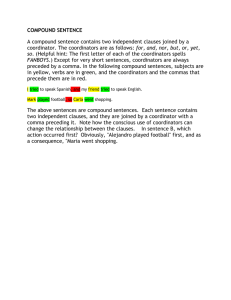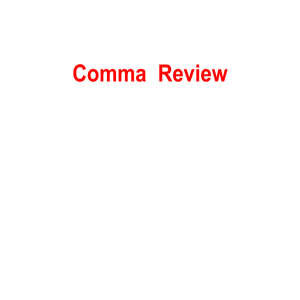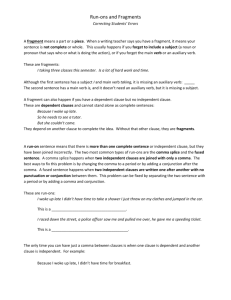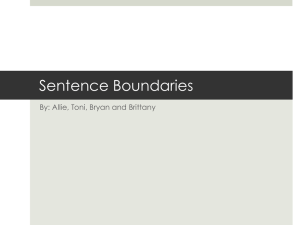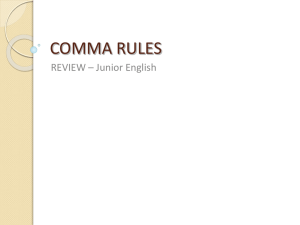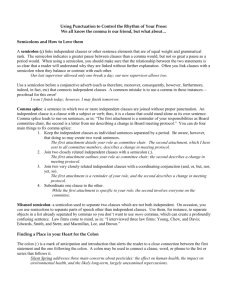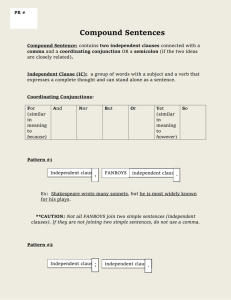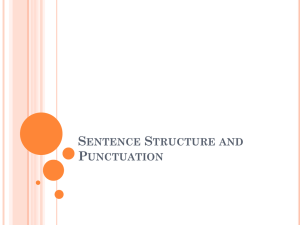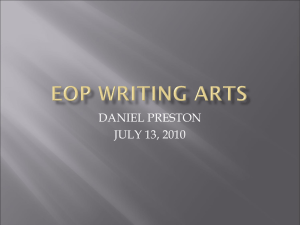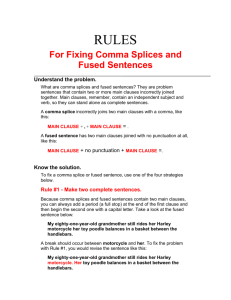Grammar Lesson #1: Fragments, Run
advertisement
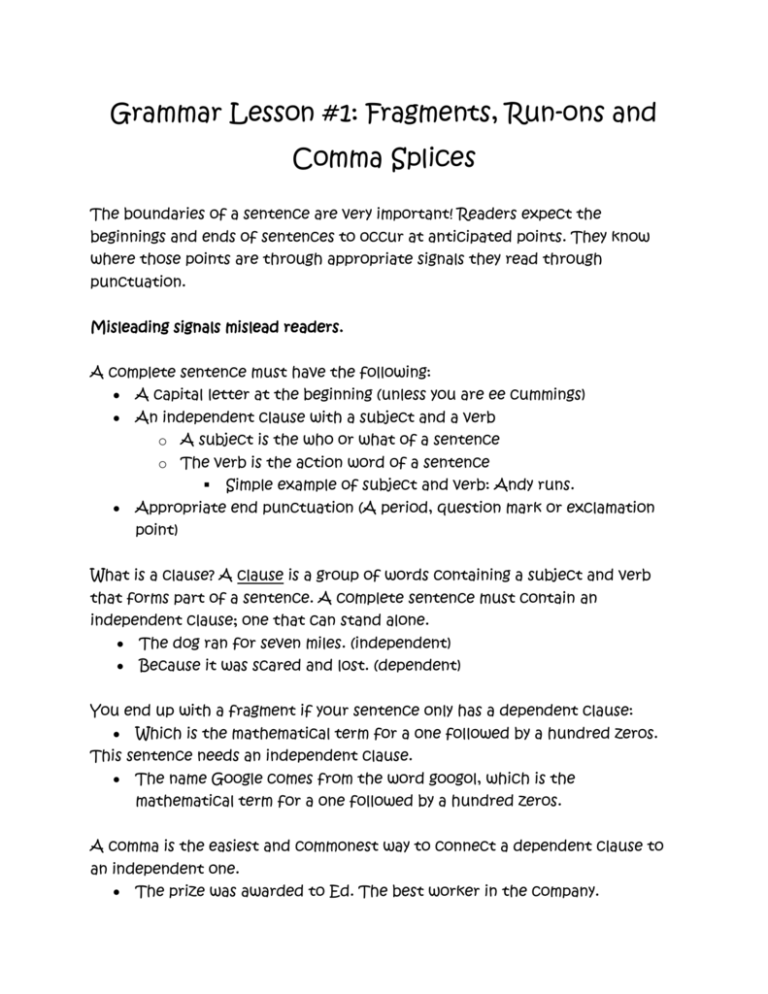
Grammar Lesson #1: Fragments, Run-ons and Comma Splices The boundaries of a sentence are very important! Readers expect the beginnings and ends of sentences to occur at anticipated points. They know where those points are through appropriate signals they read through punctuation. Misleading signals mislead readers. A complete sentence must have the following: A capital letter at the beginning (unless you are ee cummings) An independent clause with a subject and a verb o A subject is the who or what of a sentence o The verb is the action word of a sentence Simple example of subject and verb: Andy runs. Appropriate end punctuation (A period, question mark or exclamation point) What is a clause? A clause is a group of words containing a subject and verb that forms part of a sentence. A complete sentence must contain an independent clause; one that can stand alone. The dog ran for seven miles. (independent) Because it was scared and lost. (dependent) You end up with a fragment if your sentence only has a dependent clause: Which is the mathematical term for a one followed by a hundred zeros. This sentence needs an independent clause. The name Google comes from the word googol, which is the mathematical term for a one followed by a hundred zeros. A comma is the easiest and commonest way to connect a dependent clause to an independent one. The prize was awarded to Ed. The best worker in the company. becomes… The prize was awarded to Ed, the best worker in the company. A comma is a cue to the reader that there is a meaningful pause in a sentence. Inserting a comma between two clauses adds some separation, but it is not always enough. A comma, alone, doesn’t provide enough separation between two independent clauses. Only using a comma to separate two independent clauses results in a specific kind of error: a form of the run-on sentence called a comma splice. Blue jeans were originally made as tough work clothes, they became a fashion statement in the 1970s. We can see that a comma is not providing enough separation between the clauses. There are many options available to us in order to fix the sentence. It can be separated into two sentences with a period, or the words “but,” “however” or “although” can be placed after the comma as coordinating conjunctions. Another option is swapping out the comma for a semicolon. Use a semicolon to separate independent clauses closely connected in meaning or indicating a contrast. The semicolon suggests a closer relation in meaning than the period. It also connotes a longer pause than the comma. Documentaries show us history in action; Hollywood movies force us to sort out fact from fiction. A Run-on sentence is an error that occurs when a writer takes two or more independent clauses and rams them up against each other, end to end with inappropriate punctuation or none at all. “Murray takes the train to school Mom rides the bus.” Ways to avoid run-on sentences 1. Write the two clauses as two separate sentences: Murray takes the train to school. Mom rides the bus. 2. Insert a coordinating conjunction (such as "and" or "but") after the comma: Murray takes the train to school, and Mom rides the bus. 3. Insert a semicolon between the clauses: Murray takes the train to school; Mom rides the bus. 4. Insert a semicolon and a transitional word between the clauses: Murray takes the train to school; therefore Mom rides the bus. The Colon Another way to avoid a run-on sentence is to use a colon. Insert a colon between two independent clauses if the relationship of the second clause clarifies, defines, exemplifies the first clause: No man is an island: we all need to be a part of some community. The magician's talents were never disputed: every performance in his career ended with a standing ovation. Use the colon as well to introduce a list or a quotation. Think of the colon as a gate, inviting one to go on: I only know three chords on the guitar: A, G and D. As Orwell writes famously at the conclusion of Animal Farm: “All animals are created equal, but some are more equal than others.”
